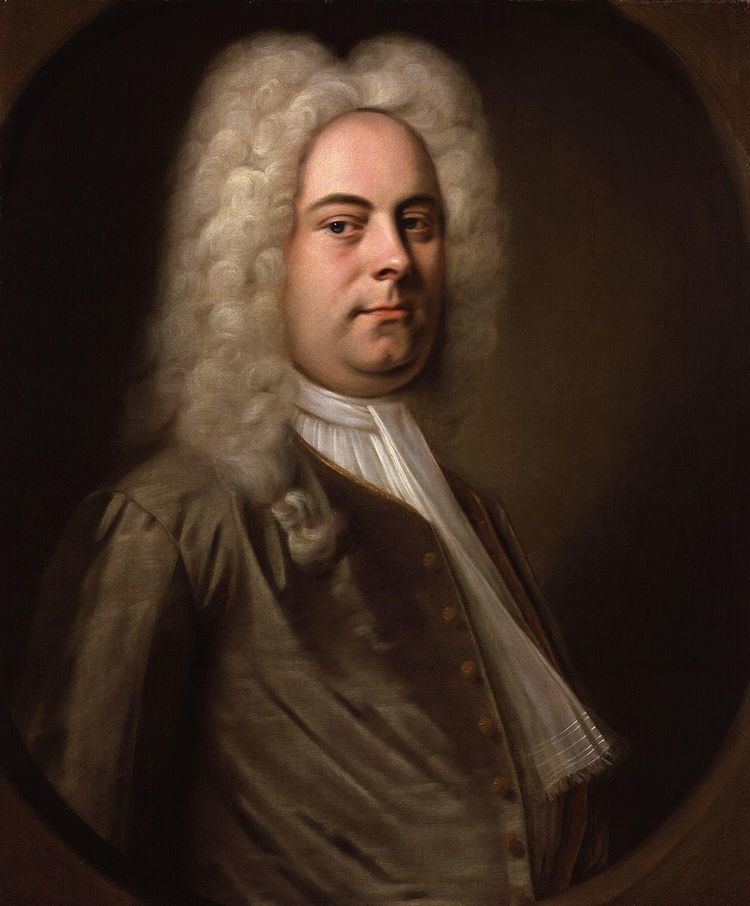 | ||
Ode for St. Cecilia's Day (HWV 76) is a cantata composed by George Frideric Handel in 1739, his setting of the poem by the English poet John Dryden. The title of the cantata refers to Saint Cecilia, the patron saint of musicians. The main theme of the text is the Pythagorean theory of harmonia mundi, that music was a central force in the Earth's creation. The premiere was on 22 November 1739 at the Theatre in Lincoln's Inn Fields, London.
Ebenezer Prout commented on various facets of Handel's instrumentation in the work. Edmund Bowles has written on Handel's use of timpani in the work.
Movements
- Overture: Larghetto e staccato—allegro—minuet
- Recitative (tenor): From harmony, from heavenly harmony
- Chorus: From harmony, from heavenly harmony
- Aria (soprano): What passion cannot music raise and quell!
- Aria (tenor) and Chorus: The trumpet's loud clangour
- March
- Aria (soprano): The soft complaining flute
- Aria (tenor): Sharp violins proclaim their jealous pangs
- Aria (soprano): But oh! What art can teach
- Aria (soprano): Orpheus could lead the savage race
- Recitative (soprano): But bright Cecilia raised the wonder higher
- Grand Chorus with (soprano): As from the power of sacred lays
References
Ode for St. Cecilia's Day (Handel) Wikipedia(Text) CC BY-SA
